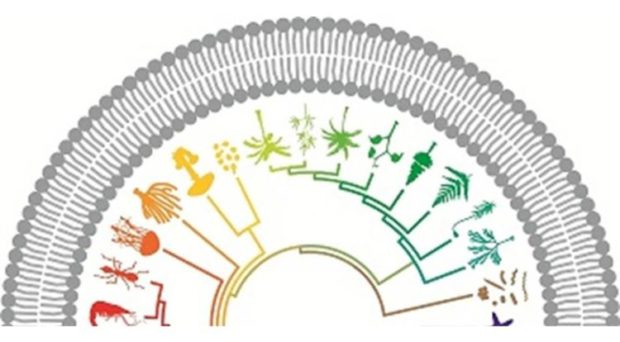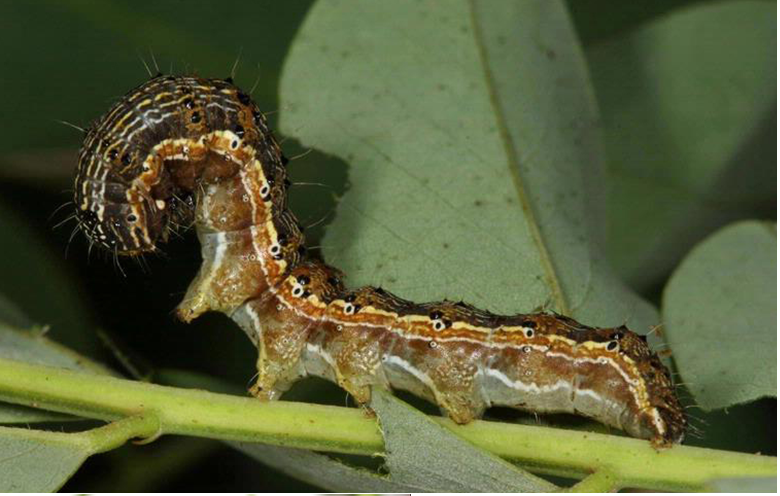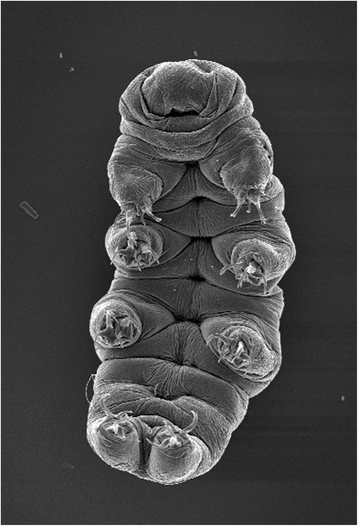
Genomics for Sustainability
Demands on agriculture are being pushed further than ever before in history – partly due to climate change, which can promote the emergence of new plant pathogens, and partly due to the raising food demand.
Fortunately, genomics is being pushed further too, with the development of new sequencing technologies and large collaborative efforts. Last year, BMC Biology published the full genome for white Guinea yam. This effort by an international group of scientists lays the groundwork for improving this important African crop. For a perspective on how this research supports food production and to find out why yams are not sweet potatoes, read the authors blog!

Understanding the genomics of a crop’s pests is also crucial for food production
Sequencing of the genomes for the cotton bollworm and corn earworm revealed the genomic innovations making these two pests dangerous for a wide range of crops, and the threat of hybrid “super pests” that could potentially be produced by their breeding, covered in this news story.
There is no talk of innovations in genomics without mentioning gene-editing – most notably relating to CRISPR-Cas9. Gene-editing enables researchers to effectively hack genomes, which, as discussed by our editorial board member Sophien Kamoun, can be employed to greatly accelerate evolutionary processes.
Gene-editing might be also used to introduce a detrimental gene into a population of pests. This phenomenon known as “gene-drive” is discussed in our recent Review article by Charles Godfray.
Probing the brain in new ways
Neuroscience has similarly seen a boost in terms of the technologies and methods that greatly expand the repertoire of questions that can be asked.
This plethora of new technologies is reflected in our series, New Tools for Neurobiology, covering the range of new methods being applied to the study of the brain.

How to visualize the brain is a recurring topic.
In their review article, Josh Morgan and Jeff Lichtman discuss the challenges of dealing with big data, and how research relying on high-resolution electron microscopy effectively leads to digitization of the brain tissue. How such a “digital brain” can be effectively explored remains a challenge to be reckoned with.
Viviana Gradinaru, in her Q&A, covers two complementary techniques: tissue clearing, which can render whole organisms transparent, and optogenetics, which enables the control and monitoring of neuronal populations in live animals. Combined use of the two provides a map of both neural networks, and neural activity.
In his Q&A, Ed Boyden discussed Expansion microscopy, a technique developed by his lab that offers an alternative to large, powerful microscopes – instead, samples themselves are made bigger, using an expandable a polymer.

Moving beyond microscopy, single-cell analysis has greatly advanced analysis of cellular subsets including from brain tissue. In their BMC Biology methodology paper Nikolaus Rajewsky and colleagues describe a cell-fixation method compatible with droplet-based single-cell sequencing technology that enables neuronal sub-types to be identified weeks after sorting and storage.
Optogenetic tools that allow analysis of behaviors were described by Suresh Jesuthasan who found that the Anion channelrhodopsins, GtACR1 and GtARC2, are highly efficient for optically inhibiting larval zebrafish neural activity. See the author blog for a perspective on this paper, as well as related research showcasing the power of the approach, and the video below, for a demonstration of green-light inhibiting zebrafish embryo movement.
…And Probing for Brain Diseases
Prion proteins cause fatal neurodegenerative diseases, yet they also have physiological roles in the brain. How to disentangle the two? Adriano Aguzzi and colleagues discuss in their review how rigorously controlled mouse models are advancing our understanding of prion protein’s biological role.
A hands-on approach to dissecting the pathology of Parkinson’s disease comes from David Klenerman and colleagues, who showed that llama derived nanobodies can inhibit alpha-synuclein fiber formation, and induce oligomers to adopt a less stable conformation. A blog post by the authors discusses how their finding can be used to provide insights into Parkinson’s disease, and further therapies.

In the Light of Evolution
A collective highlight from 2017 was the launch of our “In the Light of Evolution” series, in collaboration with BMC Evolutionary Biology and Biology Direct. The series – which is on-going and welcoming submissions – takes its name from Dobzhansky’s famous essay arguing that a meaningful picture can be drawn from “a pile of sundry facts” in biology only by looking at them in “the light of evolution”.
Evolutionary perspectives on antibiotic resistance – and why it isn’t worse, the microbiome, and “junk” DNA

The series explores how evolutionary principles applied across the spectrum of biology can shed light on a diverse range of topics – reflected in Reviews ranging from antibiotic resistance (and why it isn’t worse), the human microbiome, how we can detect selection in the genome; and a perspective on the extent to which our genome is “junk”.
Arachnophobes may have wished they weren’t “seeing double” – as the lead author put it in a blog – when the genome of the house spider was published in July, presenting evidence for whole-genome duplications in arachnid evolution.
Stickleback fish and non-model model organisms
Other creatures found a home in a Forum highlighting fourteen “non-model model organisms” – whose unique biology can help understanding diverse processes. Water bears in space, regenerating limbs, cells with 16000 chromosomes, bacterial spears, and long-lived killifish were all included in the zoo.
“Non-model model organisms” – harnessing unique biology for fundamental questions

Staying in the water, work from David Kingsley and colleagues helped shed light on how morphological evolution can occur, by looking at dorsal spines of stickleback fish. A video abstract for the paper, shown below, describes the work, which shows that a ratio of gene products, rather than simple amino acid changes or gene expression levels, can shape population differences.
Subheading: Building the cell
Our year was bookended with a focus on cell biology. One of the first 2017 papers uncovered how the cell’s internal organization is determined in part by golgins, which help determine where and with whom transport carriers (like vesicles) fuse. This “internal postcode system” is explained in the video abstract below – our first of five this year.
Cellular organisation was also discussed in ten perspectives in a Forum article, which bought together views on how cells expand membranes during growth, lipids are transported in the cell, and how organelles interact with one another. A number of these authors presented talks at the ASCB/EMBO meeting in Philadelphia, the last conference attendance for BMC Biology in a busy 2017 and always a highlight in the calendar.

We will be keeping a focus on membrane biology in 2018 with a new series on Protein Quality Control, particularly in the context of the challenging membrane environment, and the mechanisms by which the three kingdoms of life overcomes this obstacle – as reflected in the reviews that have already been published, including: an energy landscape perspective for membrane protein folding in bacteria; how protein quality control in chloroplasts is integrated with both plant development and stress response; the therapeutic potential of targeting protein quality control in breast cancer. This series – along with our collections on evolution and neurobiology mentioned above – is welcoming submissions of research papers now.
Lastly, in 2017 BMC Biology offering registered reports and direct transfers from BioRxiv, and we hope to see more of both in 2018. . We are sincerely grateful to all of our authors and reviewers of 2017, and are excited to see what great research 2018 will deliver.
Christian Matheou & Graham Bell
Graham received a PhD in Developmental Biology from UCL/Cancer Research UK in 2014. He joined BMC in 2015 to become a member of BMC Biology's editorial team, where he is a Senior Editor.
Latest posts by Christian Matheou & Graham Bell (see all)
- Looking back at 2017: Top Picks from BMC Biology - 23rd January 2018
Comments